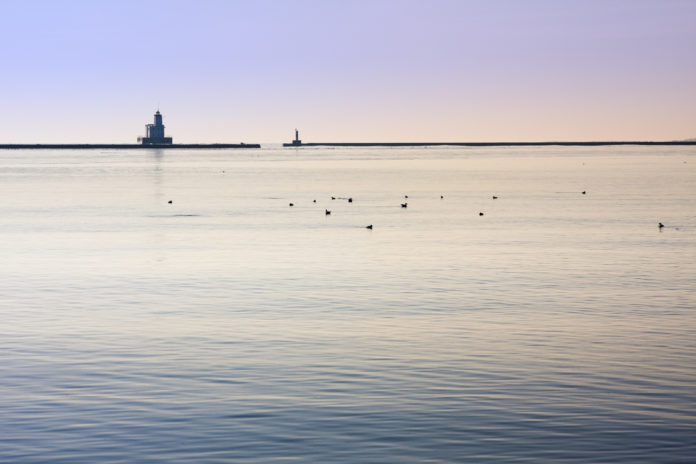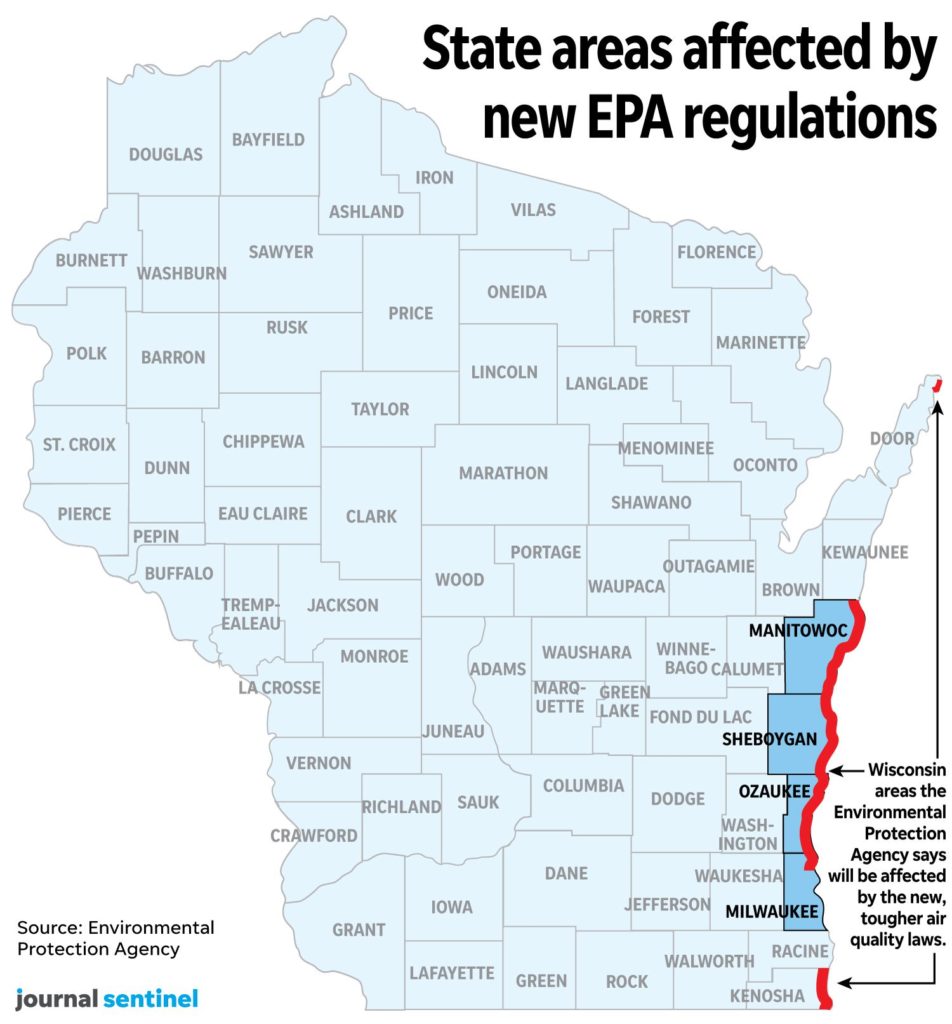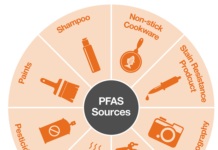
For years, Wisconsin has been dealing with ozone issues along the eastern shores of Lake Michigan. Many counties have been designated by the U.S. Environmental Protection Agency (EPA) as nonattainment areas. This has led to limited economic growth, while also causing increased costs towards the development and expansion of jobs whilst trying to protect the health of these counties and its citizens.
Why does Eastern Wisconsin have an ozone issue? In part because Lake Michigan is considered an “ozone cooker.” Air travels north from Chicago, IL, Gary, IN, and other cities, and due to sunlight and special effects of the lake, high levels of ozone are created on Wisconsin’s Lake Michigan basin.
On Monday, April 30, 2018, the EPA issued a final rule on the list of Wisconsin counties with areas that do not meet the 2015 Ozone National Ambient Air Quality Standards (NAAQS). EPA considered six Wisconsin areas as “nonattainment” with the 70-parts-per-billion (ppb) threshold, including parts of the lakeshore counties of Door, Kenosha, Manitowoc, northern Milwaukee, Ozaukee, and Sheboygan. However, the final rule provided a big win for three counties, Waukesha, Washington and Racine, which saw their names taken off the nonattainment list. This is a huge win for eastern Wisconsin and underscores the importance of agencies working together to protect human health while also providing areas with the ability to expand economically.

On December 22, 2017, EPA released a list of anticipated areas across the country that may be designated as nonattainment, followed by a 120-day comment period. When nine Wisconsin counties were classified as nonattainment, the Wisconsin Department of Natural Resources (WDNR) worked to show EPA that their ozone levels exceeded EPA’s 2015 NAAQS due to “ozone transport” of out-of-county polluters.
On February 28, during the comment period, the WDNR submitted a letter to the EPA which included data that demonstrated how each of the counties pre-designated as nonattainment by EPA, accounted for only a fraction of the total emissions recorded. In fact, WDNR argued in its report that Sheboygan County is in an irrefutable position of ozone transporting and contributes only 1 percent of the total emissions in the southwestern Lake Michigan region. Dirty air has traveled north from Chicago, IL, Gary, IN, and other cities via ozone transport, and due to sunlight and special effects of the lake, high levels of ozone are created on Wisconsin’s Lake Michigan basin. The report alleged that the Chicago area is responsible for 79 to 81 percent of the entire southwestern Lake Michigan area’s emissions. Meanwhile, the five-county Milwaukee area (Milwaukee, Washington, Ozaukee, Waukesha, and Racine) only accounts for 15 to 16 percent.
After reviewing WDNR’s analysis, EPA’s final rule released in April designated the counties of Washington, Waukesha, and Racine as attainment of the 2015 NAAQS. Due to the test results, WDNR and EPA agreed to use a “best fit” line analysis approach to recommend EPA establish a nonattainment area boundary. The new approach took into account areas and energy sources that have reduced emissions greatly over the years and the fact that certain county’s ozone concentrations are heavily impacted by out-of-state transport.
We have seen how EPA’s decision to designate Racine, Washington, and Waukesha counties as attainment and the use of a “best fit” line for nonattainment counties sparks business development, such as Foxconn’s plans for a massive manufacturing plant in Racine County. A win for these counties was a win for their local business communities and the entire state.



